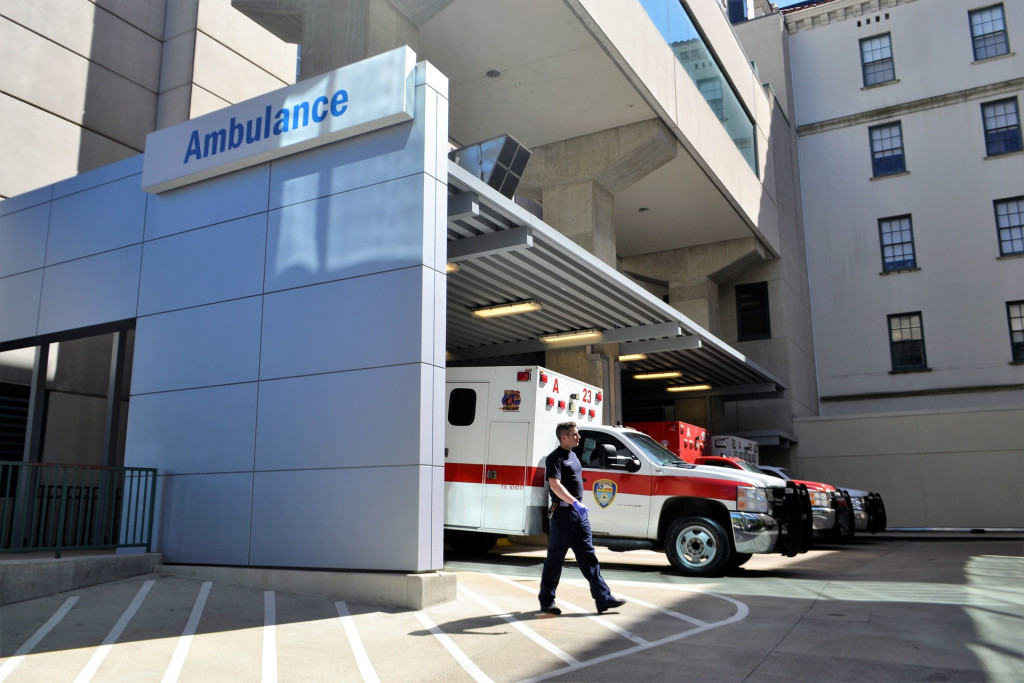
(Andrey Grinkevich/Unsplash License)

(Andrey Grinkevich/Unsplash License)
Summer of 2022 was one of the hottest in history. According to NASA, the five hottest summers on record have all happened since 2015. As the climate heats up, periods of extreme heat are getting longer and more frequent. Here are five things that you need to know about the burden of heat on the body and what’s being done to counter the growing problem.

Children are particularly vulnerable to extreme heat, but the effects often appear in subtle ways. According to pediatrician Dr. Perry Sheffield at the Icahn School of Medicine at Mount Sinai Hospital, as many as 11% of emergency room visits in warmer months are related to heat, but most instances of heat damage to young bodies fly under the radar.
Short-term issues like stomach aches and trouble focusing at school can seem fairly run-of-the-mill, but according to Dr. Sheffield these symptoms can be caused by exposure to heat, so they’ll appear more frequently as extreme heat becomes the norm. More long term problems like kidney damage from regular dehydration and in-utero issues that arise from heat exposure are harder to trace back to heat. As periods of extreme heat become more frequent, it’s more important than ever to monitor the health of infants and children and keep them cool in the summer months.
“We’re slowly coming to understand that heat has these insidious effects,” Dr. Sheffield said. “We have a long way to go, but there’s many areas in which heat is potentially playing a role in child health.”
Many physical effects of heat in adults already seem familiar – many people have experienced heat rash, heat stress and heat stroke, or know someone who has. But heat also has indirect effects on underlying health problems that are harder to track. Sickle-cell disease is one such underlying problem that becomes a serious risk during heat waves.
“Up to three million people living with sickle cell trait are at a higher risk of sudden death during exercise in hot weather,” Dr. Sheffield said.
Other underlying health problems like cardiovascular diseases and poor kidney function become much worse when extreme heat comes into play as well. According to Amruta Nori-Sarma, Ph.D. at the Boston University School of Public Health, the interactions between heat and underlying health conditions are still being explored.
“I’m sure there’s a whole spectrum of other chronic health conditions with adverse events that are associated with extreme heat exposure,” Nori-Sarma said.
Minority communities have historically fallen victim to race-based housing designations, and those policies have placed Black and Brown communities into areas that will be vulnerable to extreme heat and the health problems that come out of it.
“Less shade, fewer green plants, more pavement, all of these things are higher in the areas that were negatively impacted by these policies,” Dr. Sheffield said. “Couple those things with conditions like lower car ownership, greater reliance on public transportation, and less access to transportation. That’s a dangerous combination.”
A study recently conducted by the Department of Environmental Health at Boston University found a relationship between high temperatures in the summer and mental health-related emergency room visits. The study looked at a wide variety of mental health issues, including substance abuse, mood disorders, behavior disorders, self-harm, anxiety, and schizophrenia.
“As temperature increases, the rates of emergency department visits for mental health across all of the mental health causes that we’re interested in correspondingly saw an increase,” Nori-Sarma said.

Experts are not sure exactly why this is happening. “One of the things that we could hypothesize would be disrupted sleep periods that are happening because people are experiencing high temperatures, or even daytime discomfort or irritation,” Nori-Sarma said.
Other experts hypothesize that when temperatures rise, bodily resilience drops. Earlier this year, neuropsychologist C. Munro Cullum told the New York Times that agitation, irritation, and pain become less bearable when the body is struggling to cool down. “When we’re not comfortable, we’re not at our best,” said Cullum.
There’s still much research being done on the effects of extreme heat on mental health, but the correlation has been identified and city planners are responding.
Experts are looking at new modes of city design to explore how heat-related health emergencies can be countered. The city of Boston is leading the charge in building infrastructure to help beat the heat. Their plan for adapting to higher temperatures includes adding more green spaces and shadier infrastructure. When Boston Mayor Michelle Wu declares a heat emergency, Boston Centers for Youth and Family are converted into cooling centers where anyone can come in to cool off. The future of climate preparedness in city design could look like something like Boston.
“City planning officials have already started the process of making communities more resilient in the face of extreme heat exposure,” said Nori-Sarma. “This is one of the great ways that we can start to prepare for and respond to extreme heat events that we anticipate happening into the future.”